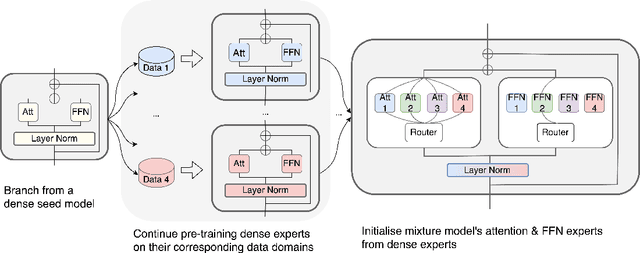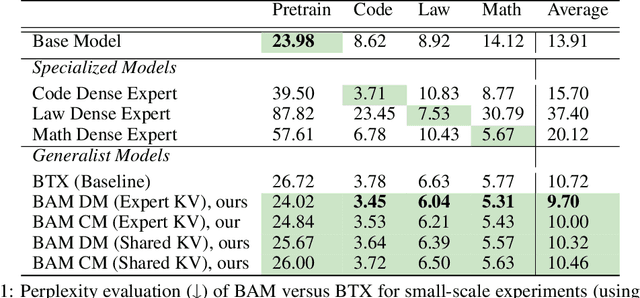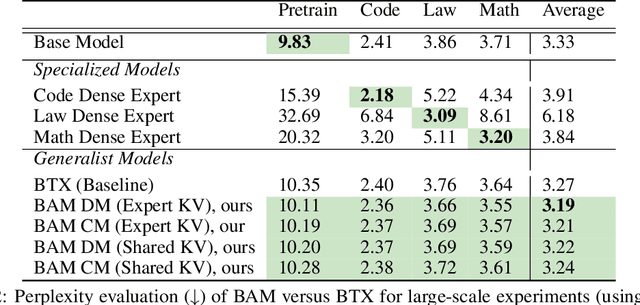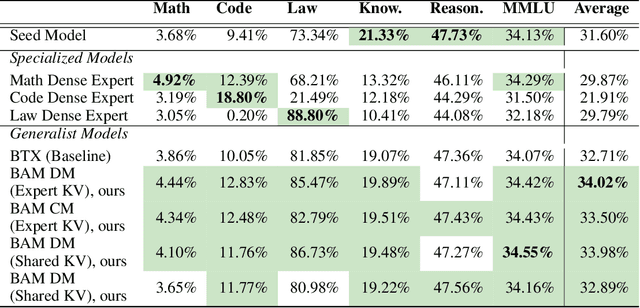BAM! Just Like That: Simple and Efficient Parameter Upcycling for Mixture of Experts
Paper and Code
Aug 15, 2024



The Mixture of Experts (MoE) framework has become a popular architecture for large language models due to its superior performance over dense models. However, training MoEs from scratch in a large-scale regime is prohibitively expensive. Existing methods mitigate this by pre-training multiple dense expert models independently and using them to initialize an MoE. This is done by using experts' feed-forward network (FFN) to initialize the MoE's experts while merging other parameters. However, this method limits the reuse of dense model parameters to only the FFN layers, thereby constraining the advantages when "upcycling" these models into MoEs. We propose BAM (Branch-Attend-Mix), a simple yet effective method that addresses this shortcoming. BAM makes full use of specialized dense models by not only using their FFN to initialize the MoE layers but also leveraging experts' attention parameters fully by initializing them into a soft-variant of Mixture of Attention (MoA) layers. We explore two methods for upcycling attention parameters: 1) initializing separate attention experts from dense models including all attention parameters for the best model performance; and 2) sharing key and value parameters across all experts to facilitate for better inference efficiency. To further improve efficiency, we adopt a parallel attention transformer architecture to MoEs, which allows the attention experts and FFN experts to be computed concurrently. Our experiments on seed models ranging from 590 million to 2 billion parameters demonstrate that BAM surpasses baselines in both perplexity and downstream task performance, within the same computational and data constraints.
 Add to Chrome
Add to Chrome Add to Firefox
Add to Firefox Add to Edge
Add to Edge